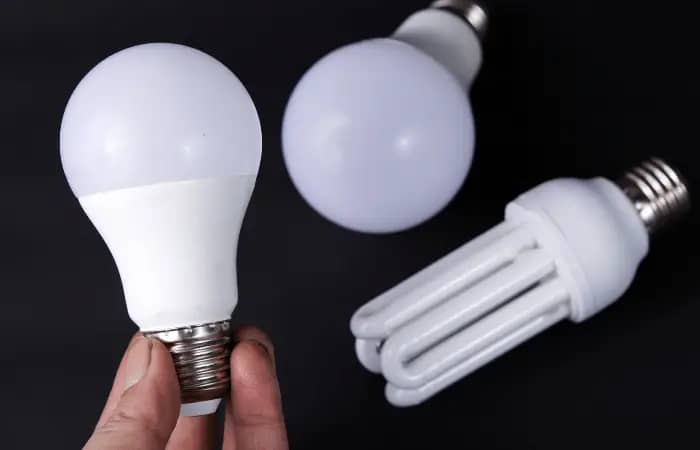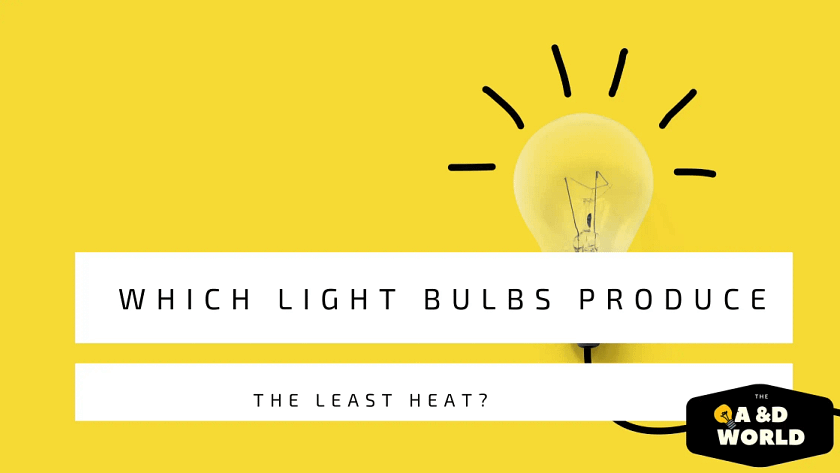Light-emitting diodes (LEDs) are the most energy-efficient lighting option on the market. When you turn on a light bulb, it generates heat. This heat is then converted into light using electricity.
Incandescent bulbs generate the most heat, followed by compact fluorescent lamps (CFLs). But LEDs are in a whole different class. According to HomeEnergy.org, an incandescent bulb generates 90% heat and 10% light.
A CFL produces 80% less heat than an incandescent bulb while providing the same amount of light. However, LEDs do not just give off the heat; they use most of it to produce light.
By switching from incandescent or CFL to LED, you can save money on your electric bill and do your part to reduce your carbon footprint. Therefore, LEDs bulbs produce the least amount of heat compared to their traditional counterparts.
How does Each Light Bulb Produce Heat?
Incandescent And Halogen 90/10 heat-light ratio
Heat is the basis of incandescent and halogen bulbs. When electricity enters the bulb, it heats the filament inside. Once the filament is nice and hot, it produces light.
Every time you flip the switch to turn on your light bulb, particles of the filament burn off. That’s why these bulbs have a short life of 800-1200 hours. These bulbs produce more heat than light, so they are not suitable for closed rooms or ceilings.
Fluorescent light bulbs 30/70 heat to light ratio
Fluorescent lights are a great option to save energy and reduce heat in your home. Unlike incandescent and halogen bulbs, fluorescent tubes use a completely different method to generate light.
This means that of the energy they use, only 30% is wasted as heat. The result? Not only are they cooler to use, but they also use less energy than incandescent bulbs.
LEDs Light Bulb
LEDs produce the least amount of heat compared to traditional incandescent and halogen bulbs. However, this does not mean that LEDs do not generate heat.
The heat sink in LEDs absorbs most of the heat and safely dissipates it without heating the bulb. For this reason, LEDs last longer- 20,000-50,000 hours.

How Much Heat Does A Light Bulb Give Off?
Energy can take many different forms, but they are all interconnected because they can all be converted into each other. According to Bookrags.com, “The law of conservation of energy states that energy can neither be created nor destroyed, but only transformed or transferred from one form to another.”
This idea is to understand how our universe works: the total amount of energy in an isolated system always remains constant, even though it may change shape. For example, a 200-watt light bulb uses 200 watts of electricity, light, and heat.
The efficiency with which lamps convert electrical energy into visible light varies from lamp type to lamp type. Some lamps produce more light than others for the same or less power consumption.
How Do You Reduce Heat From Lights?
If you want to increase the efficiency of your home lighting, it may be time to switch from incandescent bulbs to LED.
While fluorescent bulbs are more efficient than incandescent bulbs, LEDs are even more efficient when it comes to how much light is produced for a given amount of electricity flowing through the bulb.
So when you consider both energy efficiency and cost savings, LED is a better choice than fluorescent or incandescent bulbs.
The initial cost of a LED bulb is higher than other incandescent bulbs, but the higher energy efficiency and longer life of LEDs mean it is the most cost-effective bulb in the long run.





